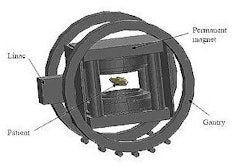
The use of radiotherapy to treat early-stage breast cancer has proved effective in decreasing local-regional recurrence rates and improving a woman's chances of long-term breast-cancer specific survival. But it can also boost her risk of heart disease if the heart is in the irradiated field.
Avoiding the heart during radiation therapy for breast cancer patients is crucial to their survival, said Dr. Lori Pierce, a professor in the department of radiation oncology at the University of Michigan Medical School in Ann Arbor. Pierce presented findings that point to the danger of heart disease in women who receive radiotherapy for breast cancer at the 2007 Breast Cancer Symposium in San Francisco, sponsored by the American Society of Clinical Oncology (ASCO).
According to a study conducted by the Early Breast Cancer Trialists' Collaborative Group (EBCTCG), radiotherapy reduced rates of local-regional recurrence following breast conservation or mastectomy by 7% after five years, compared to 26% without radiation therapy, and by 30.5% at 15 years versus 35.9% without radiotherapy (Lancet, December 17, 2005, Vol. 366, pp. 2087-2106).
That's the good news. But the bad news is that women who underwent radiotherapy had a 27% increase in cardiac death as compared to nonirradiated controls, Pierce said. Heart disease as a result of radiotherapy can include diagnoses such as pericarditis, valvular defects, cardiomyopathy, and coronary artery disease.
Why? The exact reasons aren't known. But radiation to endothelial cells has been shown to boost pro-inflammatory molecules such as interleukin-8 (IL-8) in vitro and in vivo; IL-8 causes endothelial cell growth, which leads to radiation damage and mitotic death of irradiated endothelial cells. The theory is that if this happens in the endothelium of capillaries of the myocardium as well as in the endothelium of larger coronary vessels, it can trigger the formation of atherosclerotic plaque.
For women already at risk for heart disease, radiotherapy could tip them over the edge: Pierce cited a study from researchers at the University of Pennsylvania that linked the presence of hypertension with a higher risk of coronary artery disease in women who had undergone left-sided breast radiation therapy (Journal of Clinical Oncology, September 1, 2006, Vol. 24:25, pp. 4100-4106).
"Radiation can't initiate coronary artery disease, but it may accelerate the process," she said.
There are no defined dose-volume parameters that offer clinically safe levels of cardiac irradiation, Pierce said. The best thing to do is to reduce the heart's exposure or exclude it from the irradiated field, via breath-holds during scans and prone positioning. Also key is treating cardiac co-morbidities and strongly encouraging patients to stop smoking.
"Individualized treatment planning is the key," Pierce concluded.
By Kate Madden Yee
AuntMinnie.com staff writer
October 4, 2007
Related Reading
Breast radiotherapy studies propose shorter treatment, confirm lack of cardiac risk, June 13, 2007
US-guided percutaneous placement of PBI balloon catheter is safe, efficient, November 30, 2006
Radiotherapy can benefit elderly women with early breast cancers, May 17, 2006
Skin condition after breast radiation requires clarification, March 6, 2006
Copyright © 2007 AuntMinnie.com



















